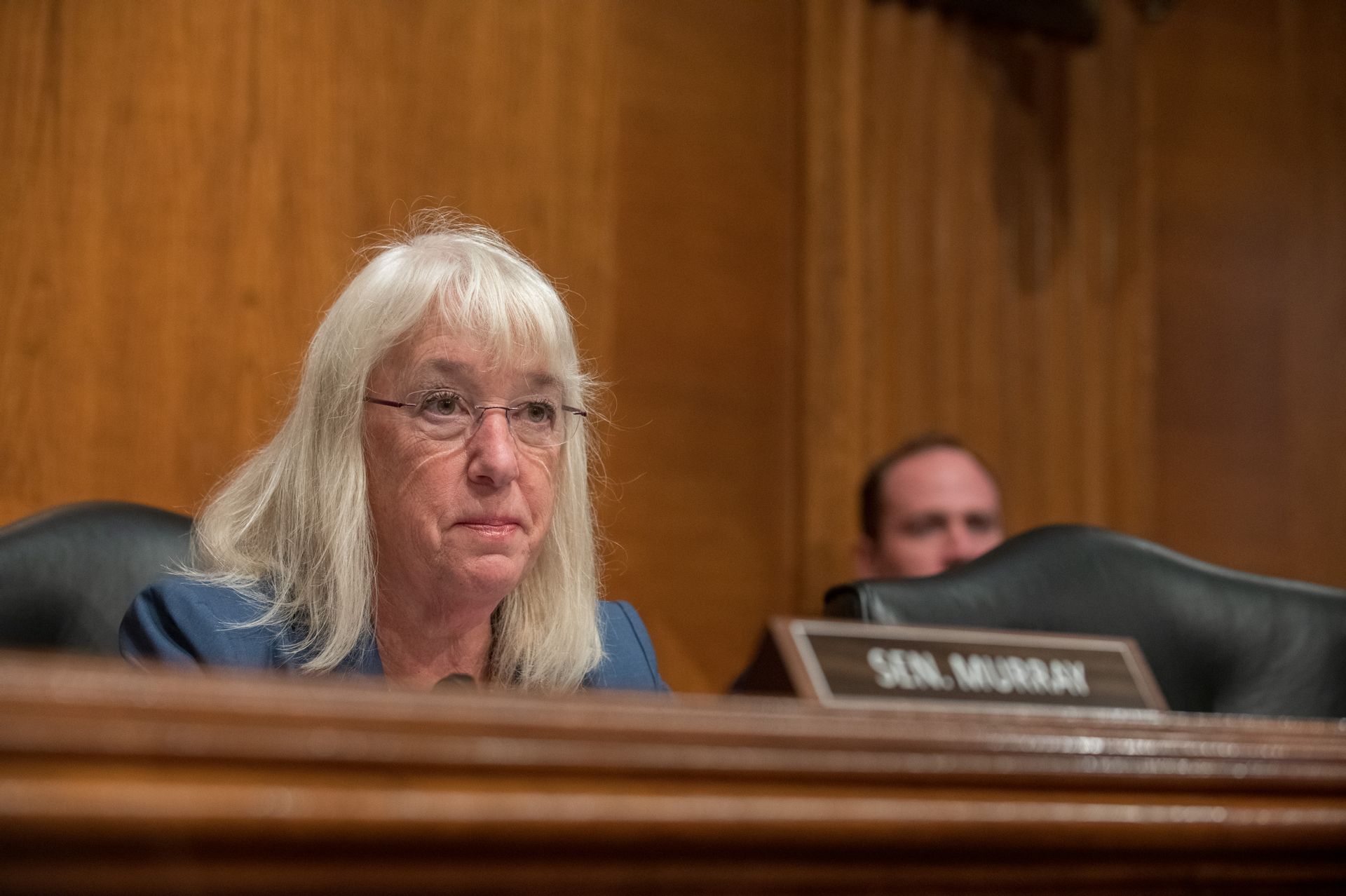ICYMI: Senator Murray Helps Secure Key Funding for Salmon and Coastal Recovery in Bipartisan Infrastructure Bill – MORE HERE
(Washington, D.C.) – Today, U.S. Senator Patty Murray (D-WA) announced $2,718,700 in federal funding from the Bipartisan Infrastructure Law (BIL) for fish passage projects across Washington state. The funding announced today is just the first of additional federal investments in the National Fish Passage Program expected to be delivered over the next five years. The Bipartisan Infrastructure Law that Senator Murray helped pass will bolster efforts to address outdated, unsafe or obsolete dams, culverts, levees and other barriers fragmenting our nation’s rivers and streams, which will help restore fish passages and aquatic connectivity.
The National Fish Passage Program, facilitated by the U.S. Fish and Wildlife Service, supports aquatic ecosystem restoration projects and restores free-flowing waters, allowing for enhanced fish migration and protecting communities from flooding.
“When we wrote the Bipartisan Infrastructure Law, I fought to make sure that salmon recovery and habitat restoration was a priority. This is important for our economy, our environment, and our Tribal partners—so it was important to me,” said Senator Murray. “It’s good to see the Bipartisan Infrastructure Law in action less than a year since it was signed into law, delivering much-needed funding to help save our salmon and the wild spaces that make Washington state so special. We need to keep doing everything we can to save our salmon—and this is just one important piece of that work.”
Washington will be receiving funding for six fish passage projects along the Chehalis watershed, Wisen Creek, Anton & Cedar Creek, West Fork Grays River, South Fork Tieton River, and Johnson Creek.
- Chehalis watershed: A project to correct fish passage barrier in Chehalis watershed, WA Passage project will provide $75,900 in BIL funding and $313,061 in partner match funding. This project will replace 33% passable fish passage barrier into a fully passable structure on Schafer Boom Road in Grays Harbor, WA and contribute to opening 10.21 miles of habitat.
- Wisen Creek: project will provide $551,000 in BIL funding and $713,000 in partner match funding to replace three undersized culvert fish barriers: one culvert on Wisen Creek and two culverts on Wisen Branch Creek. The overall goal is to replace the three undersized culverts with fish passable structures to increase the quantity and quality of accessible spawning and rearing habitat for coho, steelhead, and trout species. Upon completion of this project, aquatic species will gain unimpeded access to 2.9 kilometers of quality habitat upstream as well as improved access to over two acres of wetland and beaver pond habitat.
- Anton & Cedar Creek: A project to correct two fish passage barriers on Anton Creek and Cedar Creek in Clallam County will provide $992,000 in BIL funding and $ 1,125,232 in partner match. The Anton Creek crossing is a 67% passable round steel culvert, and the Cedar Creek crossing is a 33% passable timber box culvert.
- West Fork Grays River: A project to the Cowlitz Indian Tribe to remove and replace derelict water intake infrastructure will receive $99,800 in BIL funding and $295,389 in partner match funding. The intake removal will also restore fish passage to over 15 miles of upstream spawning and rearing habitat. This project will benefit ESA listed (threatened) Grays River populations of winter steelhead, coho, fall chinook, and chum salmon.
- South Fork Tieton River: A project on the South Fork Tieton River will provide $400,000 in BIL funding and $2,450,000 in partner match funding to construct a fish passage and enhanced spillway at Tieton Dam to allow fish access to the South Fork Tieton River. This will allow more flexibility in management of the Yakima Basin Project, especially for the release of cool-water pulse flows into the lower Yakima River to facilitate Sockeye, Summer and Fall Chinook in-migration. Also provides increased drought year flexibility in management of other Yakima Basin Reservoirs, Kechellus and Kachess, which have known bull trout passage blockages during droughts. The Project will assist in Bull Trout Recovery and increases overall productivity of Rimrock by allowing spawning migration.
- Johnson Creek: A project in the Johnson Creek is a tributary of the Okanogan river near Riverside, Washington. This tributary is important to the overall recovery goals in the Okanogan Basin and is identified as one of few lower Okanogan River tributaries that provide cold water refuge for steelhead and Chinook salmon during the summer. This project will provide $600,000 in BIL funding and $2,347,000 in partner match funding to replace four undersized barrier culverts in lower Johnson Creek with appropriately sized precast concrete box culverts and remove two other in-channel barriers reconnecting over nine miles of prime spawning and rearing habitats.
###


